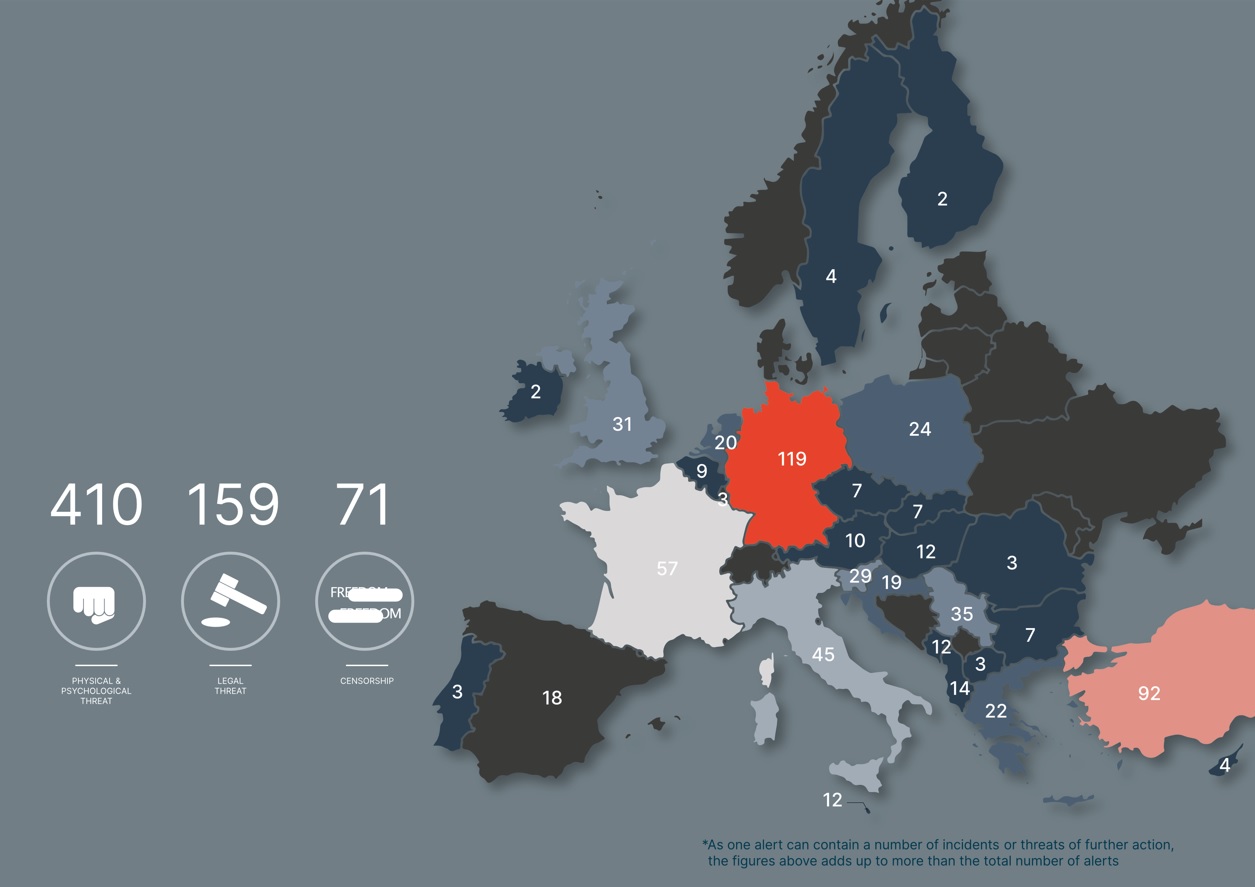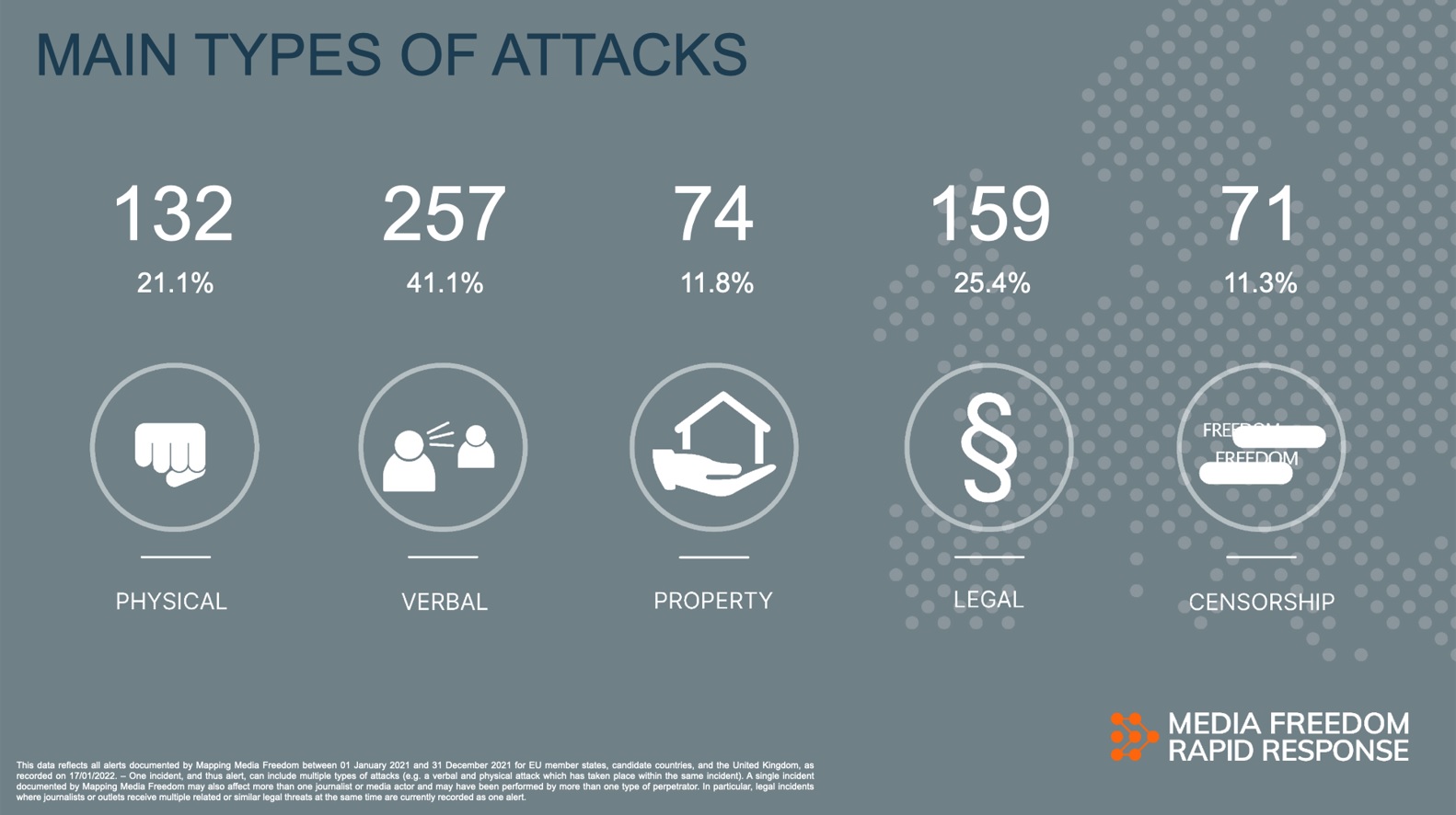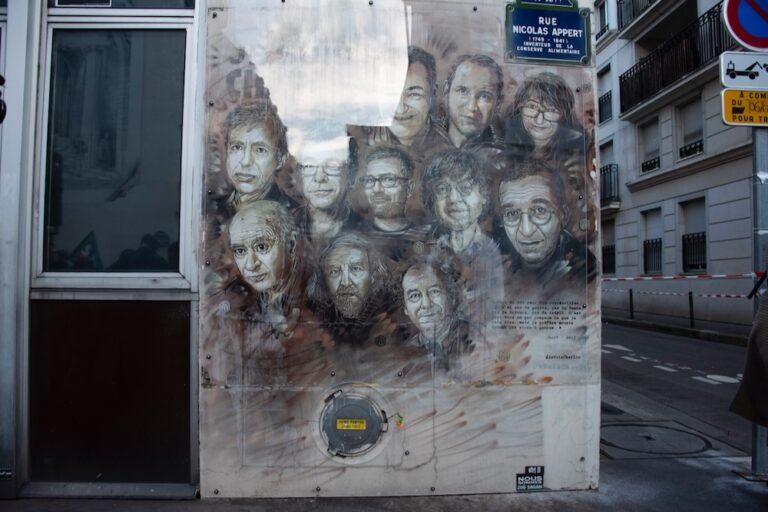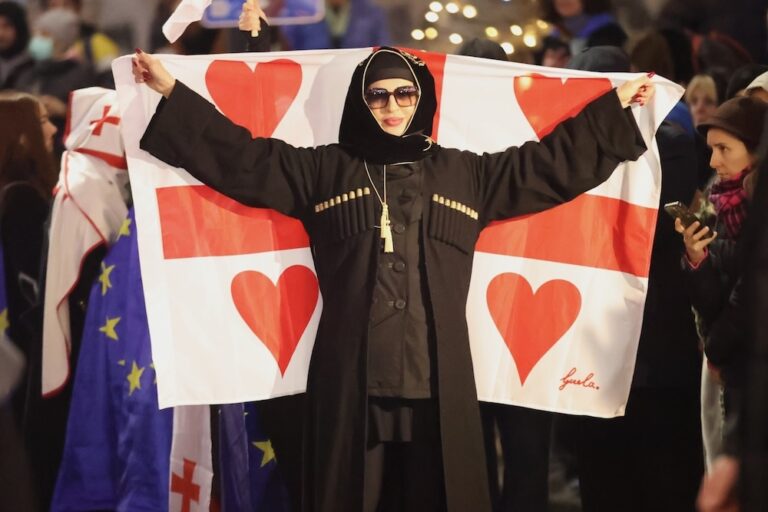Between January and December 2021, a total of 626 alerts were documented on the Mapping Media Freedom (MapMF) platform across EU Member States, candidate countries and the United Kingdom – ranging from physical attacks to SLAPP lawsuits and online harassment.
This statement was originally published on ipi.media on 22 February 2022.
IPI and MFRR partners document 626 alerts over 12-month period
Attacked while covering demonstrations, harassed online for reporting on COVID-19 and measures to fight it, or sued by private companies trying to avoid publication of damaging information. These are just some examples of the threats received by journalists and media workers in Europe in 2021.
Today the International Press Institute (IPI) joins its partners in the Media Freedom Rapid Response (MFRR) in launching our annual report documenting our organisation’s systematic monitoring of media freedom violations across Europe in 2021.
Between January and December 2021, a total of 626 alerts were documented on the Mapping Media Freedom (MapMF) platform across EU Member States, candidate countries and the United Kingdom – ranging from physical attacks to SLAPP lawsuits and online harassment.
A total of 1,063 individuals or media entities in 30 countries were subject to one or more press freedom violations, which included the murder of three journalists – underscoring the increasing threats to media freedom, journalists’ safety and independent journalism in Europe.
Download the full report here

2021 was marked – as the previous year – by the consequences of the COVID-19 pandemic. More than one in four incidents (26.5% of alerts) were linked to COVID-19, a figure comparable to the one in 2020 – 27.7%.
Many media freedom violations took place at protests and demonstrations – many held by anti-vaccine and anti-lockdown groups – where 178 alerts were recorded, 28.4% of the total. There was an increase in attacks taking place online, which rose from 14% of alerts in 2020 to 16,7% in 2021.
As for the types of attacks, the most common were verbal attacks (41.1%) such as intimidation, harassment or insults, followed by legal incidents (25.4%), physical attacks (21.1%), attacks to property (11.8%), and censorship (11.3%), such as arbitrary denial of accreditation or registration.
The report is divided into four main sections, which offer quantitative and qualitative analysis of the main attacks perpetrated against journalists and media workers during the year. The first section provides a general picture and includes visualisations and statistics that summarise the data and explain the main findings of the monitoring project.
The analysis is followed by thematic reports focusing on two of the most relevant topics spotted by the monitoring partners throughout the year: attacks and threats linked to COVID-19 and online attacks. The third section focuses on country studies from the following states: Germany, Turkey, France, Italy, Serbia, Slovenia, Poland, Greece, the Netherlands, Spain, Albania, Montenegro, and Hungary.

This report was coordinated by the Media Freedom Rapid Response (MFRR), a Europe-wide mechanism which tracks, monitors and responds to violations of press and media freedom in EU Member States and Candidate Countries.



